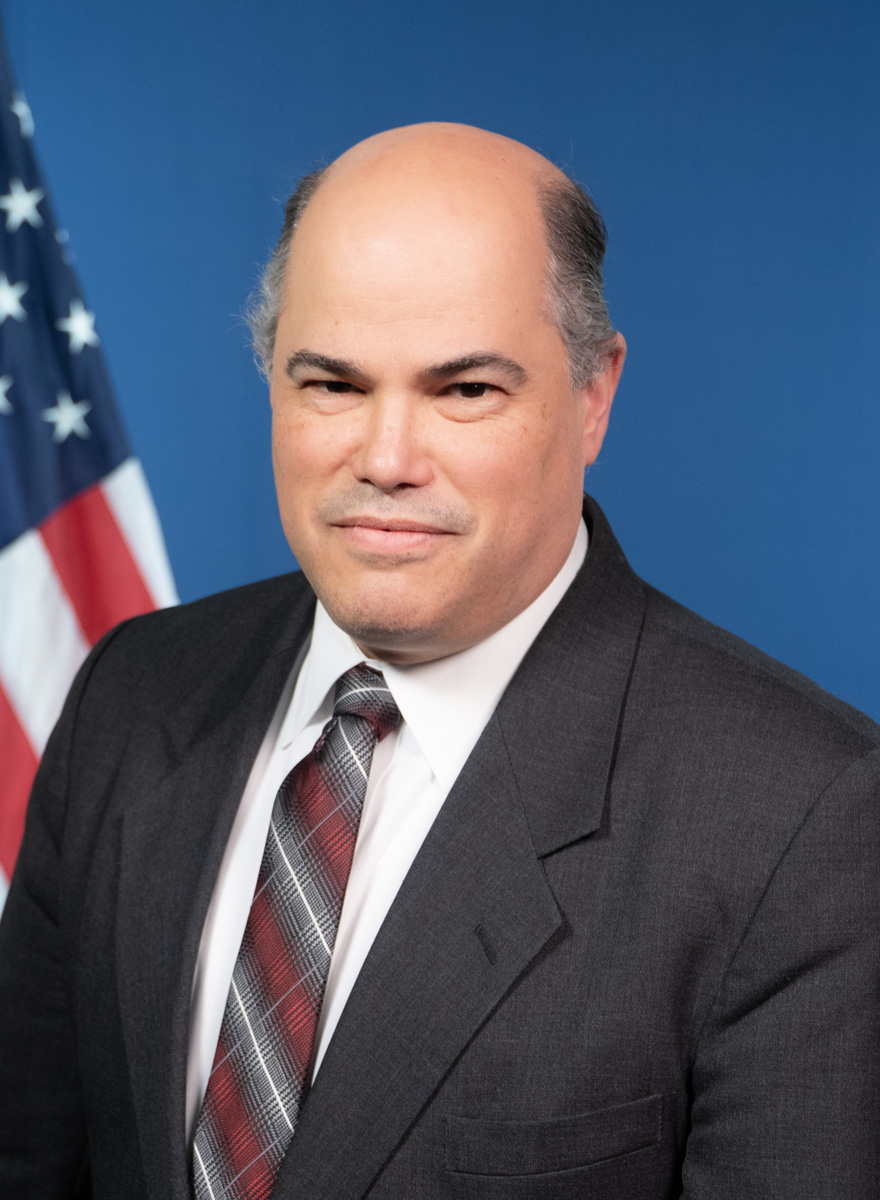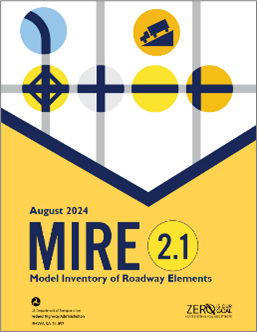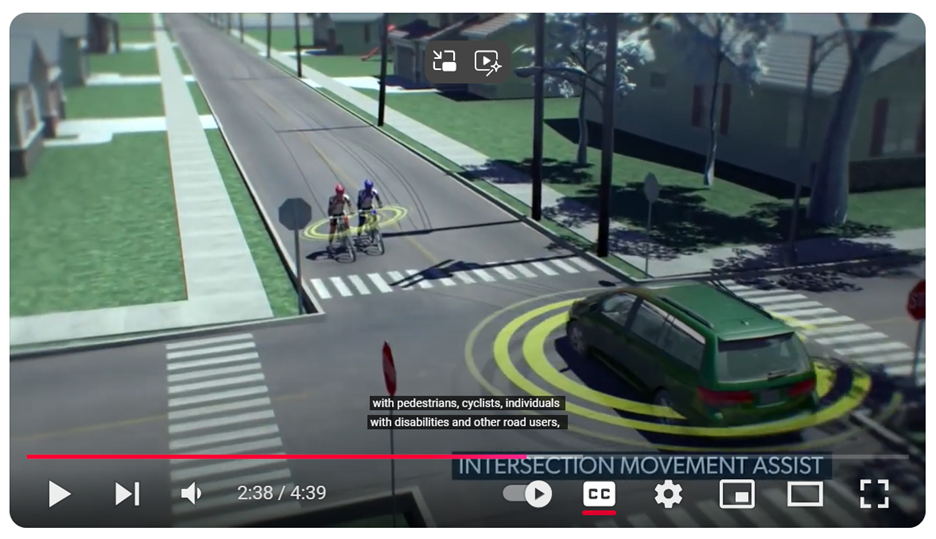
Safety Compass Newsletter
A Publication of the Federal Highway Administration Office of Safety
Fall 2024: Volume 18, Issue 3
In this issue:
A Message from the FHWA Associate Administrator for Safety
STRENGTHENING SAFETY CULTURE
Where is Your Organization on the Safety Culture Spectrum?
Toolkit Features Practices and Resources for Becoming a Vision Zero Community
WHAT’S WORKING: NOTEWORTHY PRACTICES FROM THE FIELD
IMPROVING SAFETY FOR VULNERABLE ROAD USERS
A Go-To Guide for Maintaining Sidewalks and Bicycle Infrastructure
Join FHWA’s Community of Practice to Promote Pedestrian Safety on Arterials
SAFETY DATA
User Guide Supports a Proactive Approach to Safety
MIRE 2.1 Helps States Meet Federal Safety Data Requirements
Complete Streets Transportation Pooled Fund Seeks Agency Partners
SAFE STREETS AND ROADS FOR ALL
USDOT Provides More Than $1 Billion in FY 2024 Second Round Safe Streets for All Funding
Questions about Safe Streets and Roads for All? We Have Answers.
SAFETY FUNDING OPPORTUNITIES
IN CASE YOU MISSED IT
LOOK FOR FHWA AT THESE ROADWAY SAFETY EVENTS
Message from the Associate Administrator for Safety

Robert Ritter, Associate Administrator for Safety
Fall and winter are seasons of reflection and planning. It’s a time for celebrating what we’ve accomplished, taking stock of what we’ve learned, and mapping out the hard work that remains.
We continue to make progress toward creating a safe system for all users. Still, more work remains. One of the things I value most about working at FHWA is seeing how all the safety efforts happening at local, State, and Tribal levels add up. Combined, they tell a story of a country working to integrate safety across the entire lifecycle of our transportation projects—from planning and design, to construction, maintenance, and renewal—and across the breadth of the transportation network. This effort is always a work-in-progress.
We curated this issue of Safety Compass to assist transportation professionals as they take stock of their achievements and map out their 2025 plans. There are tools and funding opportunities to help agencies:
- Build a stronger internal culture of safety
- Protect all people, including those walking, rolling, and biking
- Take a more data-driven, systemic approach to roadway safety
- Prepare for a Safe Streets and Roads for All grant
Ultimately, these resources are about saving lives, those dearest to us and people throughout our communities we may never meet. Please take full advantage of these resources and let us know what you find most useful.
Robert Ritter
Where is Your Organization on the Safety Culture Spectrum?
Road safety culture includes the shared values, actions, and behaviors that demonstrate a commitment to safety over competing goals and demands. FHWA has published a toolkit for facilitated workshops aimed at assessing and improving the safety culture of transportation agencies. Comprised of five elements, the Organizational Safety Culture Self-Assessment Toolkit includes an instruction manual for facilitators, a questionnaire with two assessment survey tools, strategies for improvement, an improvement plan template, and a resource list. (Chimai Ngo)
Strengthen your agency’s safety culture through a self-assessment.
Toolkit Features Practices and Resources for Becoming a Vision Zero Community
The Vision Zero Toolkit is a new FHWA publication for local, regional, and Tribal jurisdictions that are establishing, planning, and implementing safety efforts to help realize the goal of zero roadway deaths. The Toolkit provides communities, organizations, and advocates with tools and resources to advance Vison Zero. Each section includes a variety of available resources as well as notable practices from existing Vision Zero communities. (Chimai Ngo)
Share the Vision Zero Toolkit with local stakeholders in your community.
Case Studies Showcase Safe System Approach Implementation
As States work to incorporate the Safety System Approach (SSA) into their policies, processes, and projects, much can be gained by learning from others. FHWA recently published a set of case studies that highlight how some States are implementing the SSA. Examples from four states—Alaska, Arkansas, Illinois, and Massachusetts—demonstrate various ways States can put the Safe System Approach into practice. (Rick Drumm)
Read the Safe System Approach Implementation case studies.
Equity in Roadway Safety: A Focus on Homelessness
People experiencing homelessness have an increased risk of being killed or seriously injured in traffic crashes. Transportation agencies can make significant progress toward their goal of zero deaths by implementing promising practices that sustainably, effectively, and humanely address road safety for people experiencing homelessness.
To tackle the safety challenges this vulnerable road user group faces, FHWA issued a publication highlighting seven promising practices. Each practice includes suggested implementation activities and offers case study examples of how State and local transportation agencies are implementing them.
These case studies were highlighted in a recent webinar in which the Texas Department of Transportation’s Austin District, Hawaii Department of Transportation, and the City of San José, CA, shared their strategies for addressing the road safety needs of people experiencing homelessness.
Read the Case Study on Promising Practices to Address Road Safety among People Experiencing Homelessness and watch the related webinar (passcode: 3HZ8x@Md). (Anthony Boutros)
A Go-To Guide for Maintaining Sidewalks and Bicycle Infrastructure
Just like highways, active transportation facilities—like sidewalks and bike lanes—require maintenance to ensure safe and dependable access. Neglected facilities may be rendered completely unusable and put vulnerable road users at risk. To help agencies, FHWA recently published the Guide for Maintaining Active Transportation Infrastructure for Enhanced Safety. This Guide identifies effective practices for active transportation infrastructure maintenance based on the experiences of State, local, and Tribal agencies.
The Guide discusses common maintenance issues impacting pedestrians, bicyclists, and micromobility users; temporary, short-term, and long-term maintenance measures; and construction techniques to lessen maintenance. This comprehensive publication also addresses planning, prioritization, inspection, compliance, and funding. (Tamara Redmon)
Share the Guide with the professionals who maintain your agency’s active transportation facilities.
Join FHWA’s Community of Practice to Promote Pedestrian Safety on Arterials
Around 65 percent of all pedestrian traffic fatalities in the United States occur on arterial roadways. Traditionally, these higher speed, multilane, signalized roadways were not designed with pedestrian safety in mind. FHWA is creating a virtual Community of Practice that will focus on making arterial roadways safer for people outside of vehicles. Members of Tribal and State agencies, metropolitan planning organizations, and cities are encouraged to join.
The Community of Practice will be an inclusive and collaborative effort to support a range of practitioners working to advance safe multimodal access. The group will learn from and build upon the key strategies outlined in the recent FHWA report, Improving Pedestrian Safety on Urban Arterials: Learning from Australasia. Additionally, participants will have access to notable practices, guest speakers, panel discussions, research and synthesis products, virtual peer exchanges, curated resources, and opportunities for targeted technical assistance.
The Office of Safety expects to launch the group in November 2024. There is no specific time commitment, just a willingness to learn and share. (Tamara Redmon)
Improve pedestrian safety on urban arterials, join the FHWA Community of Practice.
User Guide Supports a Proactive Approach to Safety
The Systemic Safety User Guide is now online. The document is a major update to the 2013 Systemic Safety Project Selection Tool and is of interest to all agencies, providing guidance, tips, FAQs, and many examples of applying the proactive systemic approach to safety. A systemic approach continues to be a fundamental component of a comprehensive safety management system. More resources, including a 1-day workshop available to transportation agencies upon request, will be available soon. (Matthew Hinshaw )
Improve your agency’s systemic approach to safety with the User Guide.
MIRE 2.1 Helps States Meet Federal Safety Data Requirements
The Model Inventory of Roadway Elements 2.1 (MIRE 2.1) is the latest guideline resulting from two decades of Federal safety data policy and national noteworthy practices. MIRE provides States with a national model of relevant roadway and traffic data inventory that they can use to support data-driven decision making. MIRE 2.1 includes a revised format to reflect modern database environments, updates operational and design elements that have become more widely implemented, serves as a resource for meeting Federal safety data requirements, and better aligns with other Federal datasets and requirements across FHWA. This guide will be a critical tool for safety engineers, HPMS coordinators, and GIS specialists. (Sarah Pascual)
Complete Streets Transportation Pooled Fund Seeks Agency Partners
Agencies of all sizes can join this new consortium and help advance research on innovative strategies to design and implement safe and accessible streets through a Complete Streets approach. Read the solicitation and encourage the agencies you work with to join.
USDOT Provides More Than $1 Billion in FY 2024 Second Round Safe Streets for All Funding
On September 5, U.S. Transportation Secretary Pete Buttigieg announced the second of three Fiscal Year (FY) 2024 award packages under the Safe Streets and Roads for All (SS4A) program. That package provides more than $1 billion in funding for 70 Implementation Grant awards and 284 Planning and Demonstration Grant awards.
The Bipartisan Infrastructure Law established SS4A as a discretionary program with $5 billion in appropriated funds from 2022 to 2026 for grants to prevent roadway deaths and serious injuries. Over $2 billion is available for future funding rounds.
FHWA is currently administering more than 1,600 SS4A grants. Recently announced awards include:
- City of Palm Bay, FL: Awarded $2.4 million for the construction of a 6-ft sidewalk near two schools to improve safety, along with the implementation of a pedestrian hybrid beacon, and other countermeasures.
- Board of County Road Commissioners, Kalamazoo County, MI: Awarded $25 million to significantly improve safety on more than 130 mi of primary roadways, most of which are rural.
- Blackfeet Tribe of the Blackfeet Reservation, MT: Awarded $3.2 million to support the Blackfeet Comprehensive Action Plan.
On November 15, the third and final round of FY 2024 SS4A grant awards was announced. Read the full press release about the new SS4A recipients.
Questions about Safe Streets and Roads for All? We Have Answers.
Safe Streets and Roads for All (SS4A) is a first-of-its-kind program, and SS4A grant recipients need both roadway safety and grant administration support to successfully complete their projects. To help meet these needs, the SS4A Technical Assistance Center launched the SS4A Clearinghouse website, a tailored one-stop shop for SS4A resources. Users of the website can view SS4A training materials, register for upcoming events, watch past webinars, stay current with industry happenings through blog posts, find answers to frequently asked questions, and review safety success stories.
In addition to materials on grant administration, the Clearinghouse also hosts a resource library, which includes information on roadway safety topics such as proven safety countermeasures, stakeholder engagement, data analysis, the Safe System Approach, and much more. Visit the SS4A Clearinghouse.
2025 Tribal Transportation Program Safety Fund
Prevent and reduce transportation-related injuries and fatalities on Tribal Lands by applying for a grant from the FY 2025 Tribal Transportation Program Safety Fund (TTPSF). Applications for the TTPSF began October 1, 2024, and will run through January 15, 2025. If you have questions, please email TTPSF@dot.gov.
Eligible projects for the TTP Safety Fund include:
- Develop and update transportation safety plans
- Safety data assessment, improvement, and analysis
- Systemic roadway departure countermeasures
- Infrastructure improvements
USDOT Announces the National V2X Deployment Plan
As part of its commitment to reducing deaths and serious injuries on our Nation’s roadways, the USDOT announced the Saving Lives with Connectivity: A Plan to Accelerate V2X Deployment, on August 16, 2024. This plan will guide the implementation of vehicle-to-everything (V2X) technologies across the Nation and support USDOT’s commitment to pursuing a comprehensive approach to reduce the number of roadway fatalities to zero. Watch an overview of the announcement on YouTube. (Norah Ocel)
Virtual Reality and Vulnerable Road Users
Each quarter, Turner-Fairbank Highway Research Center (TFHRC) Chief Scientist Craig Thor hosts R&T Now Interchanges, a series of conversations spotlighting cutting-edge transportation research. In this episode, Human Factors Research and Development Team Leader Brian Philips discusses the Virtual Reality Laboratory’s efforts to better understand vulnerable road users’ decision-making process.
Hear the latest episodes by subscribing to FHWA’s research newsletter, R&T Now.
104th Transportation Research Board (TRB) Annual Meeting. Washington, DC. January 5–9, 2025. TRB’s Annual Meeting draws thousands of transportation professionals from across the country and around the world. The program covers all transportation modes, with sessions and workshops addressing topics of interest to policy makers, practitioners, researchers, and representatives from government, industry, and academic institutions.
2025 National Bike Summit. Washington, DC. March 11–13, 2025. The National Bike Summit is an annual gathering that brings together a diverse coalition of cyclists, advocates, policymakers, and industry leaders focused on the concepts that promote biking that is safer and more convenient for everyone. Workshops and breakout sessions are designed to enhance attendees’ collective understanding of how to improve the biking experience through expanding bicycling education, increasing the inclusivity of and access to bicycling, and building bicycle infrastructure that connects communities.
The Federal Highway Administration’s Office of Safety works toward a future where all people move safely across America. We serve State, local, and Tribal communities as they envision, plan, and build safety into our transportation network. Crashes will happen, but the stories will be of survival, recovery, and lives yet to live.

FHWA publishes the Safety Compass Newsletter three times a year. We welcome your comments, questions, and suggestions. Please send them to christina.tennessen@dot.gov.
The Safety Compass is available online at the FHWA Office of Safety web site at: https://safety.fhwa.dot.gov/newsletter/safetycompass/.










